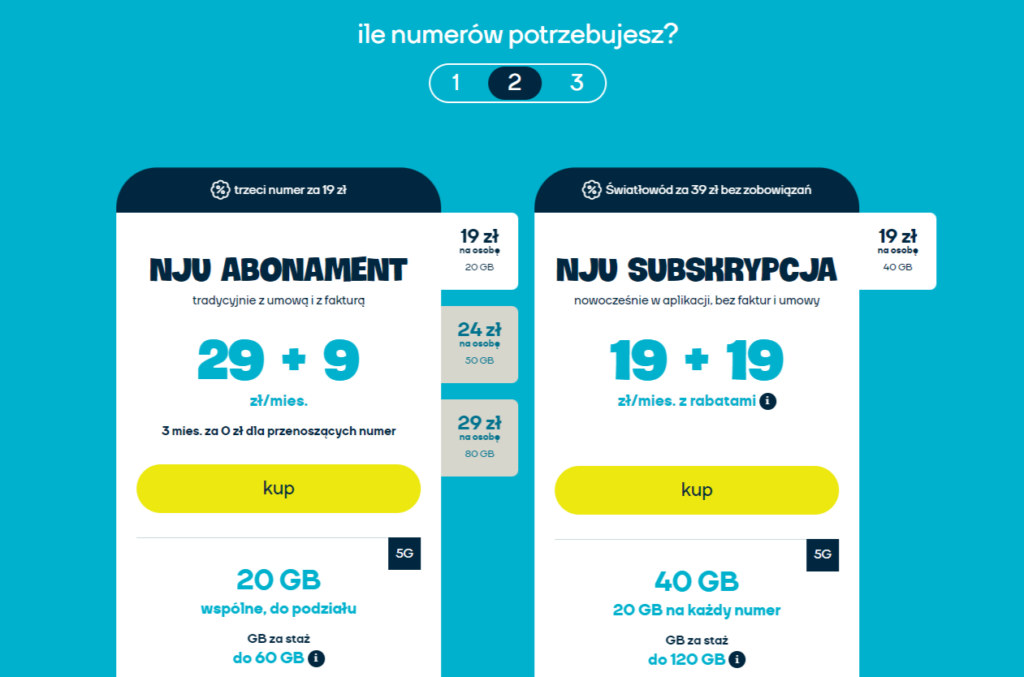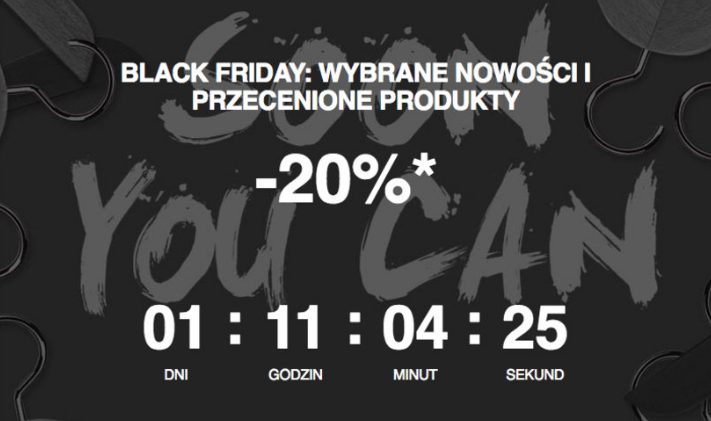What is a landing page?
A landing page, landing page or landing page (as is usually the case, a specific term has not crystallized in the Polish language and has been adopted in general use) is a type of simple website. The hallmark of a landing page, however, is not its design or layout of elements, but how the user arrives at it. Landing pages are used in promotional activities – marketers refer potential customers from marketing channels precisely to the landing page. The user thus “lands” on a given page, which is built entirely around a single goal. This allows marketers to focus the attention of potential customers on the most important elements of the offer.
Landing page in e-commerce – straight to the point
Landing pages are usually content-savvy websites, very different from a company’s homepage or corporate social media profile. The result of using a landing page is supposed to be a conversion, i.e. the user performing the intended action. And what makes using a regular website as a conversion generator problematic?
The goals of these sites (website, social media profile) versus a landing page are different – a landing page is created to get the highest possible conversion rate from a single action – for example, signing up for a newsletter. The main page of the company, in turn, serves as its business card, informs about the scope of its offerings or allows contact.
Example
Company A’s marketing team is holding a contest with a prize for the winner: a double invitation to a concert by a popular artist. The contest is being promoted online – mainly on social media, but also in display ads. However, each ad should refer users to a specific place – that place is a landing page created specifically for the contest.
Users who land on this page will see a simple site with information about the contest’s terms and prizes and a sign-up form. Each submission of a completed form is a conversion – in this case, bringing the company the user’s data: their email address and/or phone number, which it can use in future marketing communications.
No distractions
The ideal landing page does not contain navigation, menus or other distractions that distract the user from the goal. Instead, you’ll almost always find a few key elements on it: a headline, the content of the offer, the benefits of choosing a particular offer, and a CTA, or call to action – the latter usually in the form of a button or form.
What could be a landing page?
Above, we wrote about ideal landing pages – created according to art, more likely to achieve the expected conversion. However, there won’t always be the funds to create a dedicated landing page (although we’ll explain later that it doesn’t have to be expensive at all). So is it possible to use something we already have as a landing page?
Of course! A product card in a store, for example, can serve as a landing page – however, this is a good solution actually only in one situation: when we organize a promotion for a specific product or group of products (available under one link).
The use of a product page as a landing page, however, has a basic disadvantage – it’s still a page where the user will find a menu, a chatbot pop-up on the side, and maybe even a pop-up telling the user to sign up for a newsletter. Each of these elements can distract, thereby reducing the chance of conversion (adding a product to the cart).
What if our goal is not to sell a product, but something completely different?
What might be the goals of landing pages?
Given the context, i.e. support for the store’s promotional activities, landing pages can fulfill several different purposes. The most obvious seems to be sales, but in practice landing pages are rarely used to sell physical products. The situation is slightly different with digital products, such as subscriptions, courses or apps. A landing page can successfully get users to start a trial period, which of course supports sales.
What counts as a conversion?
A conversion is referred to as a visitor’s completion of a single action that we planned. This will be a response to a Call to Action, that is, the main element of a landing pagee, generally expressed by clicking a button. Some conversions are easy to get (going to another page), others will require user engagement on a completely different level (filling out a multi-step form), but this does not exhaust the possibilities. What else could be a conversion?
From the point of view of the action performed:
- Send the completed form,
- Scanning the QR code,
- button click.
From the point of view of the realized goal:
- providing an email address,
- downloading the materials offered (e.g., e-book, discount coupon, app),
- Launching the service (e.g., signing up for a free trial period),
- Adding the product to your cart,
- purchase of a product or service,
- event registration,
- Making an appointment to speak with a consultant,
- Making a call or sending a message.
These, of course, are not all possible conversions – but these are the ones we will encounter most often.
What are microconversions?
A subgroup of conversions are the so-called. micro-conversions, i.e., activities whose execution leads the user to the realization of the main goal. So if you’re creating a site with the goal of selling a product, you’ll consider the completion of a transaction to be a conversion.
On the way to the destination, the user can perform several actions. If he watches a video about a product (1), then goes to that product’s tab in the online store (2), and then adds it to his shopping cart (3), he will complete three micro-conversions – all of which lead to the main goal and increase the likelihood of achieving it, but do not yet guarantee anything. Nonetheless, care should be taken to create an environment that makes it easier for visitors to realize micro-conversions.
Where to get a landing page from?
Many people who run their online stores avoid landing pages. Often the reason is that they remember very well how much they paid to create a store website. The thought of having to pay a not inconsiderable amount of money for each landing page design can be frightening.
Fortunately, reality is not so unforgiving – many of us can create a landing page without much effort and at a relatively low cost, using wizards available on the Internet. These are web applications (accessible from a web browser) in which – after paying for a subscription – you can create uncomplicated web pages by simply dragging elements such as buttons, forms, graphics or text boxes from the toolbar to the workspace. Properly configuring a landing page is a slightly more complex process, but with the help of free online tutorials, we can easily meet this challenge. It is also worth considering analytics and the possibility of A/B testing – you usually have to pay extra for such features, but they are sometimes crucial to achieving satisfactory campaign results.
How to create a landing page for the e-commerce industry?
The ability to create landing pages alone is barely half the battle – because the site needs to be built to support the goal, not stand in the way of it. How to do it? Here are 7 rules for creating landing pages for e-commerce!
1. set the goal at the very beginning and focus the page on it
It is extremely important that your landing page has a clear purpose from the start, even before you choose the tool in which to build it. If you care about basic functionality, such as the ability to include graphics, text and a button directing users to the next stage of the sales funnel, you can save money by purchasing access to a tool whose simple features it offers cheaply.
If you choose to use a web designer, you will also pay less and optimize your project time if you know exactly what you need from the beginning.
On the other hand, if you need a landing page, allowing you to create a multi-step form or a counter, measuring the time (e.g., until the end of the promotion), establishing this in the first stages will allow you to budget accordingly.
All these differences are a direct result of the chosen goal – it depends on it what elements are needed on the landing page.
2. match the landing page to the ad
Advertising that will direct to a landing page should not function in isolation from it. On the contrary, the ad and landing page should be constructed in such a way that they match each other in color and sometimes even in content. A good example is the nju mobile banner and landing page:

After clicking on the ad, the user is taken to a landing page maintained in the same color scheme. This makes it easier to get your bearings, especially for those Internet users who open a dozen or even dozens of browser tabs simultaneously:

3. develop a compelling CTA
The call to action must ultimately convince the user to perform the action. What is important in this context is not only what is written on the button, but also how the button looks. Make sure the CTA stands out, for example, in color or shape. Finally, develop content.
A good practice is to create such text on the button that answers the user’s question “what happens when I click?”. It will probably work better to write “send an application” than “win a contest,” since the latter is a promise without a cover. The “visit the store” content is also better than the “buy now” content on the landing page, which is supposed to take visitors to the online store’s website. Suggesting that a purchase will follow a click may scare off the undecided.
4. design a simple path to your destination
The landing page should be simple and designed to be as easy to reach as possible. Most of the elements from a regular website do not make sense on a landing page. We’re talking about such distractions as navigation, links to social media or to other subpages. Remember, too, that a landing page should be as concise and uncluttered as possible – too much text will negatively affect conversions.
5. prepare content based on target audience
Always keep in the back of your mind who the target audience of a particular landing page is supposed to be. Write content tailored to the target audience of this particular initiative (e.g., promotion or event). This is one of the elements for which landing pages are quite popular – on your company’s homepage you must, as much as possible, carry communications aimed at all audiences of your products or services. A landing page, on the other hand, allows you to target your message to a selected slice – in order to best tailor your message and thus get the best possible conversion.
Example:
Mr. Jan runs an online store where he sells computer hardware. In the near future, he wants to organize an event that will include a tournament for high school students. With ads and a landing page, it can prepare communications tailored to the expectations and needs of teenagers, while not having to interfere with the store’s homepage (except possibly placing a banner directing to the contest).
6. arouse the need
If you want to achieve high conversions on a landing page, consider reinforcing the message by creating a sense of urgency. The idea is to present the offer in such a way that the user realizes that it is limited – for example, by the number of products available at a discounted price or the duration.
A great tool for reinforcing such a message are counters – for example, one that timestamps the end of sign-ups for an event, or one that continuously shows how many products are left in the promotional pool.

7. use benefit speech and expose value
One of the basic rules for creating content for a landing page, is to talk about benefits, not features. Tell visitors what they will gain if they choose to interact further. Tell how the product or service they can get will affect their lives.
Provide examples of use and, if you have them, include reviews from satisfied customers on the landing page. Credible social proof is often the prevailing argument for the undecided. Make sure, however, that the reviews you expose are trustworthy – ideally, the company logos you post should be well trusted, and the reviews should be signed with the names and photos of their authors.
Summary
A landing page is a tool that can definitely prove useful in the marketing efforts of an online store. The multitude of functionalities, relatively easy creation and low cost make landing pages used by more and more companies, although it is not a new solution after all.
Some sources report that the average conversion rate on a landing page is as high as 26% – a statistic that is quite optimistic, but the fact remains that it is much easier to get a conversion on a landing page than on a standard website. This alone makes the use of landing pages in the context of promotions, special offers or sales more than recommended.


